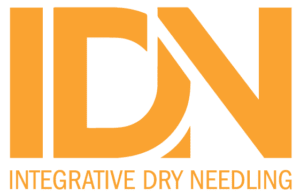Dry Needling: A Possible Detrimental Treatment After Total Hip Arthroplasty
Cureus. 2024 Oct 21;16(10):e72053. doi: 10.7759/cureus.72053. eCollection 2024 Oct. ABSTRACT This case study describes a severe and rare complication following the placement
Prior dry needling training required.
No previous dry needling training required.
These are not dry needling courses.
Learn the neuroRelease technique ON-DEMAND
Learn MSK ultrasound On-Demand
Learn Neurologic Dry Needling On-Demand for Craniocervical conditions
Exclusive Access for IDN clinicians that have taken a course!
Home / My Account / Dry Needling Research
Insights Imaging. 2024 May 11;15(1):113. doi: 10.1186/s13244-024-01695-8.
ABSTRACT
OBJECTIVE: To investigate the structural alterations, neovascularity, and elasticity of tendons and the relationship between elasticity and the Patient Rated Tennis Elbow Evaluation score after undergoing US-guided fenestration or surgery in patients with chronic lateral elbow tendinopathy.
METHODS: Participants from the per-protocol population of a randomized trial conducted between October 2016 and June 2020 were included. The surgery and fenestration groups included 24 (mean age, 50 ± 7 years [standard deviation], 10 men) and 29 (47 ± 8 years, 18 men) participants, respectively. Ultrasound exams were performed at baseline, 6 months, and 12 months. Statistical analyses included linear mixed effects and generalized equation estimation models.
RESULTS: Fenestration had no significant impact on tendon thickness (p = 0.46). Conversely, surgery significantly increased tendon thickness at 6 months (p < 0.0001) and remained elevated at 12 months (p = 0.04). Tendon echostructure exhibited a group effect (p = 0.03), indicating a higher proportion of pathological scores in the surgery group post-intervention compared to the fenestration group. Both groups showed a similar reduction in neovascularity from 6 to 12 months postintervention (p = 0.006). Shear-wave velocity increased in the fenestration group at 6 months (p = 0.04), while the surgery group experienced a nonsignificant decrease at 6 months, with some improvement at 12 months (p = 0.08). Changes in shear-wave velocity did not correlate with clinical outcome.
CONCLUSIONS: Fenestration and surgery reduced tendon neovascularity over time. Unlike surgery, fenestration did not impact tendon size while improving tendon echostructure and elasticity.
CRITICAL RELEVANCE STATEMENT: Fenestration and surgery equally alleviated symptoms and decreased tendon neovascularity in lateral elbow tendinopathy; however, fenestration did not alter tendon thickness and improved echostructure and shear-wave velocity, suggesting shear-wave velocity’s potential for quantitatively monitoring tendon elasticity during healing.
KEY POINTS: Reliable markers for monitoring healing response and informing treatment protocols in elbow tendinopathy are lacking. Fenestration and surgery reduced tendon neovascularity, while fenestration improved tendon echostructure and shear-wave velocity. Shear-wave velocity may provide quantitative measures to monitor tendon elasticity in response to treatment.
PMID:38734857 | DOI:10.1186/s13244-024-01695-8
Cureus. 2024 Oct 21;16(10):e72053. doi: 10.7759/cureus.72053. eCollection 2024 Oct. ABSTRACT This case study describes a severe and rare complication following the placement
Clin Breast Cancer. 2024 Oct 23:S1526-8209(24)00285-4. doi: 10.1016/j.clbc.2024.10.007. Online ahead of print. ABSTRACT OBJECTIVE: Literature regarding nonpharmacological interventions (NPI) for PMPS or
Arch Dermatol Res. 2024 Nov 13;317(1):13. doi: 10.1007/s00403-024-03449-4. ABSTRACT Melasma is an acquired dysfunction of melanogenesis, that poses a major therapeutic challenge
© Integrative Dry Needling 2023 | All rights reserved | Designed by Weblink
Powered by ![]()
any IDN Course!
*This discount is valid for new registrations only and can not be combined with other discount codes. Offer Expires: 12/31/2023

Not sure which course is right for you? No problem – we created an intuitive process to help!